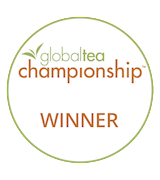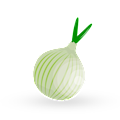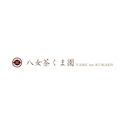TABLE OF CONTENTS
Best Japanese Foods
MAIN INGREDIENTS
Hamamatsu is a popular variety of Japanese gyoza filled with cabbage, onions, pork, and selected seasonings. It is characterized by a unique frying style in which cooks arrange gyoza in a circular pattern (hanetsuke, a technique in which a crispy bottom connects all the gyozas) so that they can fry as many snacks as possible at the same time.
It is very popular to pair Hamamatsu gyoza with a topping of bean sprouts.
OTHER VARIATIONS OF Dim sum
Characterized by an incredibly mild and refreshing flavor, negitorodon is a simple Japanese dish which consists of pieces of raw fatty tuna served over rice. Traditionally, tuna used in negitorodon is scraped around the bones or finely sliced, mixed with green onions, seasoned with soy sauce, then placed on a heap of plain steamed rice.
It is easily adjusted with various ingredients and seasonings, and usually comes served with seaweed strips, wasabi, and a raw egg yolk.
OTHER VARIATIONS OF Donburi
MAIN INGREDIENTS
Tonkotsu is a unique style of ramen consisting of an extremely rich, fatty pork broth, fresh noodles, soft-yolk eggs, and tender pork belly that melts in the mouth. It is so popular and special that it could be a dish of its own, not just a ramen style.
The ramen is usually topped with scallions for brightness and vibrancy, bamboo shoots for a crunchy, nutty flavor, nori seaweed for crispness, and sweet corn for an even better flavor. The rich broth is developed by cooking the pork bones for a very long time, until the collagen and fat dissolve, resulting in a unique, creamy texture of the dish.
OTHER VARIATIONS OF Ramen
MOST ICONIC Tonkotsu ramen
View moreMAIN INGREDIENTS
Chutoro nigiri sushi is a traditional type of nigiri sushi. It consists of hand-pressed sushi rice that's topped with slices of medium-fatty cuts of tuna. Different cuts of tuna are classified as otoro (fatty), chutoro (medium-fatty), and akami (red meat).
The dish has a rich and deep flavor and a soft texture. Traditionally, this type of sushi is eaten by hand in a single bite. It's usually accompanied by soy sauce, wasabi, or pickled ginger (gari) on the side.
OTHER VARIATIONS OF Sushi
MOST ICONIC Chutoro nigiri sushi
View moreJapanese-style curry known as karē is one of the most popular dishes in the country. It started gaining popularity in Japan during the Meiji period (1868-1912), when the British introduced it to the country. During its early years, karē with rice was an expensive, gourmet dish reserved only for the wealthy.
Compared to Indian curries, karē is less spicy, sweeter, darker, and usually thicker, which is thanks to the addition of flour or roux. There are three main version of karē in Japan - karē raisu (curry over rice), karē udon (curry over noodles), and karē -pan (a pastry filled with curry).
OTHER VARIATIONS OF Curry
MOST ICONIC Karē
View moreMAIN INGREDIENTS
Also known as dry-frying, karaage is a Japanese cooking technique in which various foods are first lightly coated in arrowroot starch, then deep-fried. The use of arrowroot starch preserves the natural water content of fried foods and produces a crispy outer surface, but alternatively, other coating ingredients such as wheat flour, tapioca, or potato starch can also be used.
Karaage can be used for frying various meats and fish, but it is most often associated with chicken, and involves a special variant called tatsutaage, where pieces of chicken are first marinated in a mixture of sake, soy sauce, and sugar which are then lightly covered with arrowroot starch and deep-fried.
OTHER VARIATIONS OF Agemono
MOST ICONIC Karaage
View moreJingisukan is a Hokkaido-specialty consisting of grilled mutton or lamb. The dish is always prepared tableside on the convex-shaped grills. The guests are served with sliced meat, which can be plain or marinated, and are then encouraged to grill the meat themselves, along with various vegetables such as onions, cabbage, leeks, or peppers.
Typical accompaniments include special soy sauce-based condiments, chili sauce or grated garlic. The origins of consuming mutton in Japan date back to 1918 when the government promoted sheep farms, but the practice only remained on Hokkaido, and though restaurants specialized in preparing Jingisukan can be found elsewhere, the dish has remained a favorite on Hokkaido and in its capital Sapporo.
MOST ICONIC Jingisukan
View moreAjitsuke tamago is a traditional dish consisting of soft-boiled eggs that have been soaked in mirin and soy sauce. The egg yolks should be custardy if properly prepared, and the eggs are eaten as a snack, a part of bento, or more commonly, enjoyed as a ramen topping.
The eggs are boiled for a few minutes so that the yolk remains runny, and they are then chilled and soaked (overnight or for a few days) in a combination of water, mirin, and soy sauce. This is the basic preparation, and some cooks might add their own secret ingredients to the marinade to make the eggs more flavorful.
MAIN INGREDIENTS
Curry udon consists of thick Japanese noodles made from wheat flour, served in a bowl of Japanese curry. Since it is a warming dish, curry udon is extremely popular during winter, and because things can get quite messy while consuming it, some curry udon restaurants offer disposable dibs to customers.
The dish can vary in levels of spiciness - from mild to hot, depending on the curry. One of the most popular toppings for the dish is Shabu Shabu meat, thinly sliced so that it combines extremely well with the thick and chewy udon noodles.
OTHER VARIATIONS OF Udon
MOST ICONIC Karē udon
View moreGyutan is a Japanese dish originating from Sendai. It consists of pieces of thinly sliced beef tongue that's cooked on a charcoal grill. It's typically seasoned with salt or soy sauce-based tare sauce before grilling. The dish is usually accompanied by pickled vegetables, a combination of steamed rice and barley known as mugi gohan, or oxtail soup.
Gyutan can also be served as a donburi over steamed rice, or as a curry, which is also accompanied by rice. It's believed that the dish was invented in 1948, when a local yakitori restaurant started to specialize in beef tongue dishes.
MOST ICONIC Gyutan
View moreTABLE OF CONTENTS
Best Japanese Food Producers
Yame Tea Kumaen is a Japanese company located in the Yame region of Fukuoka Prefecture, known for producing high-quality green tea. The company specializes in varieties such as Gyokuro, Sencha, Matcha, and Bancha, using traditional cultivation and processing methods that date back centuries.
Yame, as a region, offers ideal conditions for tea production due to its unique climatic environment. Kumaen prides itself on maintaining high standards of quality and a careful approach at every stage of production, from leaf picking to packaging.
The teas they produce are recognized for their rich flavors and delicate aromas.
AWARDS

The Leafies Awards - Gold
2024, 2023, 2021

The Leafies Awards - Best in Show
2023

Japanese Tea Selection Paris - Grand Prix
2020
BEST Yame Tea Kumaen Teas and Herbal Infusions
Arahataen Tea Farm is a traditional Japanese tea farm located in Shizuoka Prefecture, Japan. Established in 1874, the company is one of the most renowned producers of Japanese green tea. Arahataen takes pride in producing high-quality teas, using a tradition that has been passed down through generations.
The company is also dedicated to sustainable and eco-friendly production methods. Arahataen is famous for using the Chagusaba technique, a traditional method of tea cultivation that involves planting grass along the tea fields to create a natural ecosystem.
AWARDS

Global Tea Championship - Winner
2019, 2018, 2017
BEST Arahataen Tea Farm Teas and Herbal Infusions
Marukyu Koyamaen is a prestigious tea company based in Uji, Kyoto, Japan, specializing in premium green teas, particularly Gyokuro and Matcha. Founded in 1917, it has a long history of producing high-quality teas using traditional Japanese methods.
The company prides itself on its commitment to preserving the rich heritage of Japanese tea culture while delivering exceptional products that embody the essence of Japanese craftsmanship. Marukyu Koyamaen also offers a variety of tea-related products and services, including factory tours and special offerings for food-grade matcha.
Their teas are highly regarded for their rich flavor, aroma, and smoothness, making them a favorite among tea enthusiasts worldwide.
AWARDS

The Leafies Awards - Gold
2022
BEST Marukyu Koyamaen Teas and Herbal Infusions
Atelier Sueyoshi Seicha is a green tea producer based in Kagoshima Prefecture, Japan. The company specializes in the cultivation and production of high-quality Japanese green tea. Sueyoshi Seicha emphasizes the use of traditional farming methods and sustainable practices to ensure the purity and flavor of their teas.
Their product range includes a variety of green tea types such as sencha, gyokuro, and matcha. Sueyoshi Seicha Kobo also engages with the community through events and direct interactions with customers, showcasing their passion for tea and promoting a lifestyle centered around the enjoyment of fine teas.
AWARDS

Great Taste Awards - 2 stars
2024, 2023, 2022

Great Taste Awards - 1 Star
2024, 2020

Great Taste Awards - 3 stars
2022, 2021
BEST Atelier Sueyoshi Seicha Teas and Herbal Infusions
Teaholics is a Japanese company specializing in the sale and distribution of high-quality teas from around the world. Founded with the goal of providing an exceptional tea experience, Teaholics offers a diverse range of teas, including popular varieties such as black, green, white, oolong, and yellow tea, as well as herbal infusions and specialty blends.
One of Teaholics' key features is its commitment to quality. The company strives to ensure that each tea it sells is carefully selected and tested to meet high standards. Quality is further ensured through collaboration with renowned producers and tea farms that use traditional processing methods and take great care in cultivating the tea plants.
AWARDS

Great Taste Awards - 2 stars
2023, 2022, 2021

Great Taste Awards - 3 stars
2022, 2021
BEST Teaholics Teas and Herbal Infusions
Iichiko is a renowned Japanese producer of shochu, a traditional Japanese spirit made from various ingredients like barley, sweet potatoes, and rice. Founded by Sanwa Shurui, Iichiko is famous for its commitment to high-quality production and innovation.
Headquartered in the Oita Prefecture of Kyushu, Japan, an area known for its clean water and natural beauty, Iichiko has become a global leader in the shochu industry. Iichiko's most notable products include its flagship barley-based shochu, iichiko Saiten, which is crafted using unique methods such as the "all Koji" fermentation technique.
AWARDS

SFWSC - San Francisco World Spirits Competition - Double Gold
2024, 2023

ISC-International Spirits Challenge - Double Gold
2022

IWSC- International wine & spirit competition - Spirit Gold
2024
BEST Iichiko Spirits
AWARDS

International Chocolate Awards - Gold
2017, 2016, 2015, 2014, 2013

Academy of Chocolate - Gold
2016

International Chocolate Awards - Silver
2017, 2016, 2015, 2014, 2013
BEST Es Koyama Chocolates
AWARDS

Academy of Chocolate - Gold
2022, 2020

International Chocolate Awards - Gold
2018

International Chocolate Awards - Silver
2022, 2020, 2017
BEST Chocolatier Palet D'or Chocolates
AWARDS

International Chocolate Awards - Gold
2017, 2015

International Chocolate Awards - Silver
2017, 2016, 2015

International Chocolate Awards - Bronze
2016, 2015
BEST Le Chocolat De H Chocolates
AWARDS

ISC-International Spirits Challenge - Double Gold
2020, 2019

ISC-International Spirits Challenge - Gold
2024

ISC-International Spirits Challenge - Gold trophy
2020
TABLE OF CONTENTS
Best Japanese Food Products
Gyokuro Saemidori from Yame Tea Kumaen is a high-quality green tea known for its rich, sweet flavor and distinct umami profile. This tea is grown in the Yame region, which is famous for producing premium teas in Japan. Gyokuro tea is unique in that its leaves are shaded for several weeks before harvesting, reducing the amount of sunlight they receive and increasing the amino acid content, making it sweet and less bitter.
Saemidori is a variety of tea known for its rich green color and high quality, providing a full, creamy taste with a mild yet pronounced umami character. In addition to its exceptional flavor, this tea is packed with antioxidants and other beneficial nutrients that contribute to health.
AWARDS

The Leafies Awards - Gold
2024, 2023, 2021

The Leafies Awards - Best in Show
2023

Japanese Tea Selection Paris - Grand Prix
2020
Issaku Japanese Green Tea is an exclusive green tea produced by Arahataen Tea Farm. This tea is unique due to its limited production, making it rare even in Japan. It is made using the deep steaming method, which results in a stronger flavor and natural sweetness.
It is exclusively harvested from the first spring plucking and handpicked by tea masters. Issaku tea is grown on specialized farms in the Shizuoka region, where the climate contributes to its exceptional quality. This tea is perfect for those who want to experience an authentic, high-quality Japanese green tea with a rich tradition and careful processing of each leaf.
AWARDS

Global Tea Championship - Winner
2019, 2018, 2017
The Kiwami Choan is a premium matcha from Marukyu Koyamaen, known for its exceptional quality. It won the Gold Award in the matcha category at the Leafies 2022 tea fair in the United Kingdom. The matcha is carefully cultivated and processed to maintain its rich, deep flavor, making it ideal for traditional tea ceremonies and connoisseurs who appreciate high-quality tea.
It is recommended to store it in a cool, dark place or the refrigerator to preserve its freshness. The Kiwami Choan matcha offers a smooth, umami-rich taste, with a vivid green color that embodies the mastery of Marukyu Koyamaen's tea-making tradition.
AWARDS

The Leafies Awards - Gold
2022
AWARDS

Great Taste Awards - 3 stars
2022
AWARDS

Great Taste Awards - 3 stars
2021
Tenju is a premium grade of matcha from Marukyu Koyamaen. This matcha is crafted from hand-picked tea leaves and is known for its rich, distinctive aroma and robust flavor, making it ideal for preparing thick matcha. It comes in a beautifully designed packaging with the tea's name printed on the box, which enhances its premium appeal.
The Tenju matcha is recommended for connoisseurs who appreciate traditional, high-quality matcha, and it is perfect for those looking to experience authentic Japanese tea culture.
Teaholics’ Blue Mountain green tea is a unique and exquisite offering, earning a 2-star rating at the 2021 Great Taste Awards. This Japanese green tea is characterized by its vibrant and creamy taste, with notes of mango that come through distinctly on the palate.
The Blue Mountain tea presents a fresh, spring-like aroma. On the palate, it offers a smooth, creamy texture, complemented by the subtle flavor of raw mango. It’s well-balanced, with a delicate yet distinct profile that is both invigorating and refreshing.
AWARDS

Great Taste Awards - 3 stars
2022

Great Taste Awards - 2 stars
2021
Furusatonohana Saemidori ia premium kabusecha tea. This tea is made from saemidori, a variety of tea plant known for its rich flavor and vibrant green color. The tea is grown using a shading technique (kabuse), which enhances the taste by reducing the bitterness and boosting the sweetness of the leaves.
This Kabusecha is celebrated for its umami-rich flavor profile and smooth, sweet taste, with minimal astringency. It embodies the traditional Japanese method of tea cultivation, offering a premium tea experience to those who appreciate fine, aromatic teas.
AWARDS

Great Taste Awards - 1 Star
2024, 2020

Great Taste Awards - 2 stars
2023

Great Taste Awards - 3 stars
2022, 2021
AWARDS

SFWSC - San Francisco World Spirits Competition - Double Gold
2023

USC- Ultimate Spirits Challenge - Chairman's Trophy
2023, 2022, 2020

USC- Ultimate Spirits Challenge - Top 100
2023, 2022, 2020
The product Black Shichimi Pepper & Chinese Milk Vetch Honey is crafted by es koyama, a renowned Japanese confectionery brand. This unique product blends the complex flavors of black shichimi pepper, a Japanese spice mix known for its depth and heat, with the natural sweetness of Chinese milk vetch honey.
The honey is noted for its floral undertones and smooth texture, which complement the spiciness of the pepper. This combination creates a harmonious balance of sweet and spicy, making it a distinctive and gourmet addition to culinary dishes or as a standalone delicacy.
AWARDS

Academy of Chocolate - Gold
2016

International Chocolate Awards - Gold
2015
TasteAtlas food rankings are based on the ratings of the TasteAtlas audience, with a series of mechanisms that recognize real users and that ignore bot, nationalist or local patriotic ratings, and give additional value to the ratings of users that the system recognizes as knowledgeable. For the “Top 100 Japanese Foods” list until April 27, 2025, 24,821 ratings were recorded, of which 21,178 were recognized by the system as legitimate. TasteAtlas Rankings should not be seen as the final global conclusion about food. Their purpose is to promote excellent local foods, instill pride in traditional dishes, and arouse curiosity about dishes you haven’t tried.













































































































































































































































